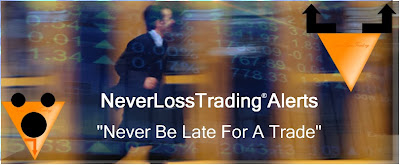Download your Free Kindle Book (click the link below)
Your Trading Career as a Private Investor - By Thomas Barmann
Promotion Time: December 24 - 28, 2013
This book is for you, if you aim to produce constant income and long term wealth from trading or investing. The difference between trading and investing lies in the perspective of time: Investors usually take a longer-term perspective to buy and hold their investments, while traders focus on shorter-term results. If you learn how to participate in the up- and down moves of the financial markets, you will start to invest more frequently and turn yourself into a trader.
Trading is a professional business and it requires preparation: Those, who take the other side of your orders are prepared to make money. Are you?
Unfortunately, most of what we learned in life is rather a hindrance to progress in trading: Good work ethic for example – We start to work when the office day starts and work to the end – and feel good about what we have done. However, we better not start to trade when the market opens and trade to the end: We only trade when we have a signal and the odds are in our favor. Our account statement tells us if we can feel good about what we accomplished. Let this book guide you to a new perspective of trading or investing.
Prepare yourself for a part-time or full-time trading career; follow our step-by-step guide and insights, how to start and operate your trading business.
To connect you with real-trading-world of this decade, we introduce you to the principles, methods, and strategies of Spotting and Following Institutional Money Moves by Algorithmic Trading with Human Interaction.
If you want to learn more about NeverLossTrading in a personal consulting session: Call +1 866 455 4520 or contact@NeverLossTrading.com
Your Trading Career as a Private Investor - By Thomas Barmann
Promotion Time: December 24 - 28, 2013
This book is for you, if you aim to produce constant income and long term wealth from trading or investing. The difference between trading and investing lies in the perspective of time: Investors usually take a longer-term perspective to buy and hold their investments, while traders focus on shorter-term results. If you learn how to participate in the up- and down moves of the financial markets, you will start to invest more frequently and turn yourself into a trader.
Trading is a professional business and it requires preparation: Those, who take the other side of your orders are prepared to make money. Are you?
Unfortunately, most of what we learned in life is rather a hindrance to progress in trading: Good work ethic for example – We start to work when the office day starts and work to the end – and feel good about what we have done. However, we better not start to trade when the market opens and trade to the end: We only trade when we have a signal and the odds are in our favor. Our account statement tells us if we can feel good about what we accomplished. Let this book guide you to a new perspective of trading or investing.
Prepare yourself for a part-time or full-time trading career; follow our step-by-step guide and insights, how to start and operate your trading business.
To connect you with real-trading-world of this decade, we introduce you to the principles, methods, and strategies of Spotting and Following Institutional Money Moves by Algorithmic Trading with Human Interaction.
If you want to learn more about NeverLossTrading in a personal consulting session: Call +1 866 455 4520 or contact@NeverLossTrading.com












